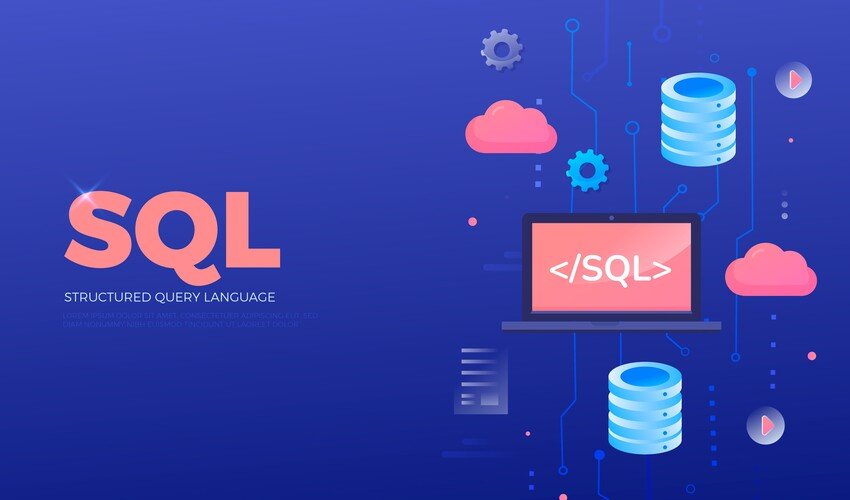Most AI projects fail because of bad data infrastructure, not bad algorithms. Digital CXO research shows only 32% of AI models make it from pilot to production. That means 68% fail. The problem isn’t the AI itself. Underlying data systems can’t handle production AI workloads. These systems lack power, size, and trust. Organizations spend money on new models but ignore the infrastructure that makes AI work. Building converged AI data architectures solves this. Such architectures combine traditional data systems with specialized AI components. Strong operationalization frameworks and strategic governance prevent costly quality issues.
Key Points
- us research shows vector databases growing at 22.1% CAGR, reaching $13.3 billion by 2033
- MIT Sloan Review finds poor data quality costs companies 15-25% of revenue
- TD Securities forecasts cloud GenAI spending will jump from 12% to 28% of total cloud spend in three years
- Successful AI data infrastructure needs clear KPIs, phased maturity models, and enterprise integration
How Do You Build Converged AI Data Architectures That Scale?
Modern AI data infrastructure needs traditional data systems plus specialized AI components. Such systems handle different data types and processing needs. Don’t replace your existing data warehouse. Extend it with AI-specific capabilities for unstructured data, real-time processing, and vector operations.
Market.us research shows vector database growth at 22.1% CAGR to $13.3B by 2033. Such growth shows a big change in data storage needs. Traditional relational databases work well with structured data. High-dimensional vectors challenge these systems. These vectors power modern AI applications. Vector databases like Pinecone, Weaviate, and Qdrant are becoming essential. They enable similarity search, recommendation systems, and retrieval-augmented generation at scale.
Connecting structured data warehouses with unstructured AI data lakes creates challenges. Your existing SQL databases contain valuable business data. AI models need this for context and training. Create data pipelines. Move data between traditional systems and AI-specific storage layers. Use existing investments. Add AI capabilities step by step through this hybrid approach.
Real-time vs batch processing decisions depend on your AI use cases. Recommendation systems need sub-second response times. Training large language models can run overnight. Your infrastructure must support both patterns efficiently. Consider implementing a lambda architecture. Real-time streaming and batch processing through the same data pipeline become possible.
These technical decisions need strategic thinking as the AI world changes fast. Strategic planning for AI infrastructure needs an understanding of upcoming technology trends. The Gartner hype cycle 2025 provides key insights into new AI technologies that will change enterprise infrastructure strategies. Organizations must prepare for these changes to keep a competitive advantage.
How Do You Design Data Architectures That Handle AI Workloads?
Modern AI applications need special data architectures that traditional systems can’t provide. Vector databases, streaming data pipelines, and distributed storage become key components. These architectures must handle both structured business data and unstructured AI data at the same time.
Vector database integration transforms how you store and retrieve AI data. Traditional databases excel at exact matches and transactions. Vector databases enable semantic search, similarity matching, and retrieval-augmented generation. Market.us research shows vector database growth at 22.1% CAGR to $13.3B by 2033. This growth shows big changes in data access patterns for AI applications.
Data mesh architecture lets domain teams own their data while keeping company-wide rules. Domain teams own their data products and APIs. Centralized governance keeps things consistent across domains. Data product definitions standardize how teams share data for AI use. This approach scales data access without creating big bottlenecks.
Data fabric implementation creates one data layer across all sources. Data virtualization lets AI models access data without knowing where it is stored. Semantic data layer gives consistent meaning across different data sources.
Multi-modal data processing handles text, images, audio, and structured data in unified pipelines. Unified data ingestion processes different data types through common interfaces. Multi-modal AI models consume data from multiple sources simultaneously.
How Do You Implement Data Governance That Prevents Costly Quality Issues?
MIT Sloan Review research shows data quality issues cost companies 15-25% of revenue. Data governance for AI systems faces unique challenges beyond traditional data management. AI models use different data types, create new data artifacts, and work at a huge scale.
Data provenance tracking becomes essential when AI models make decisions affecting business outcomes. Provenance graphs track data transformations from source to AI model output. Immutable audit trails record every data access and transformation. Data lineage visualization helps explain AI model decisions to stakeholders. Provenance metadata enables rapid debugging when AI models produce unexpected results.
Synthetic data governance addresses privacy concerns while enabling AI training. Differential privacy techniques add noise to datasets while preserving statistical properties. Generative adversarial networks create synthetic data that preserves original data characteristics.
Data sovereignty frameworks ensure compliance with regional data protection laws. Data residency requirements force data processing within specific geographic boundaries. Cross-border data transfers require explicit consent and legal frameworks. Sovereign cloud deployments ensure data remains within national boundaries.
How Do You Optimize Data Storage and Processing Costs for AI Scale?
TD Securities research shows cloud GenAI spending will grow from 12% to 28% of total cloud spend. Data storage and processing represent the biggest cost parts in AI infrastructure. Traditional cost optimization strategies don’t work for AI workloads with their unique data patterns and processing needs.
Embedding storage optimization requires understanding vector dimensions and similarity algorithms. 768-dimensional embeddings consume 3KB per vector. 1536-dimensional embeddings consume 6KB per vector. Hierarchical navigable small world (HNSW) indexes reduce search complexity from O(n) to O(log n). Product quantization can compress vectors by 75% with minimal accuracy loss.
Data lake tiering strategies optimize costs based on AI workload patterns. Different tiers serve different needs: The Hot tier provides sub-millisecond response for real-time inference. Warm tier handles batch training in seconds. Cold-tier stores historical data with minutes of retrieval, and the Archive tier preserves compliance data with hours of retrieval. Automated tiering moves data based on access patterns and AI model requirements.
Cross-cloud data strategies reduce vendor lock-in and optimize costs. Multi-cloud data replication enables workload distribution. Cloud-agnostic data formats prevent vendor-specific optimizations. Bandwidth costs can exceed compute costs for large AI datasets.
How Do You Build a Data-First AI Infrastructure Roadmap?
Successful AI data infrastructure needs data-centric planning that puts data quality, accessibility, and governance first. Traditional infrastructure planning focuses on compute and storage capacity. AI infrastructure planning must start with data architecture and data strategy.
Data readiness assessment looks at your current data landscape for AI compatibility. Data quality metrics show gaps that will hurt AI model performance. Data accessibility patterns show which AI use cases work with existing infrastructure. Data governance maturity shows readiness for AI-scale data operations. This assessment guides infrastructure investment priorities.
Data infrastructure maturity follows a foundation, integration, intelligence progression:
Foundation Phase:
- Establish a data mesh architecture with domain ownership
- Implement data fabric for unified data access
- Create data product definitions and APIs
Integration Phase:
- Deploy multi-modal data processing pipelines
- Implement data virtualization across sources
- Add a semantic data layer for AI consumption
Intelligence Phase:
- Enable autonomous data discovery and preparation
- Implement data-driven AI model training
- Achieve real-time data intelligence across all domains
Data infrastructure KPIs should measure both technical and business outcomes. Technical metrics include data pipeline reliability, data quality scores, data access latency, vector search performance, and cross-modal data processing efficiency. Business metrics focus on AI project success rates, time-to-insight for new AI features, data-driven decision frequency, and data product adoption rates.
Conclusion
AI data infrastructure success depends on a data-first architecture that handles both traditional and AI-specific data types. Vector databases, streaming pipelines, and distributed storage become key components. Organizations that invest in data-centric AI infrastructure now will have big competitive advantages. AI adoption speeds up fast. Start with a full data readiness assessment. Build a phased roadmap for AI data infrastructure enhancement. Put data quality, accessibility, and governance first from day one.
Resources
- https://digitalcxo.com/article/machine-learning-deployments-suffer-high-failure-rates/
- https://sloanreview.mit.edu/article/seizing-opportunity-in-data-quality/
- https://www.tdsecurities.com/ca/en/genai-public-cloud-spend-survey-2025
- https://market.us/report/vector-database-market/
Read Dive is a leading technology blog focusing on different domains like Blockchain, AI, Chatbot, Fintech, Health Tech, Software Development and Testing. For guest blogging, please feel free to contact at readdive@gmail.com.





